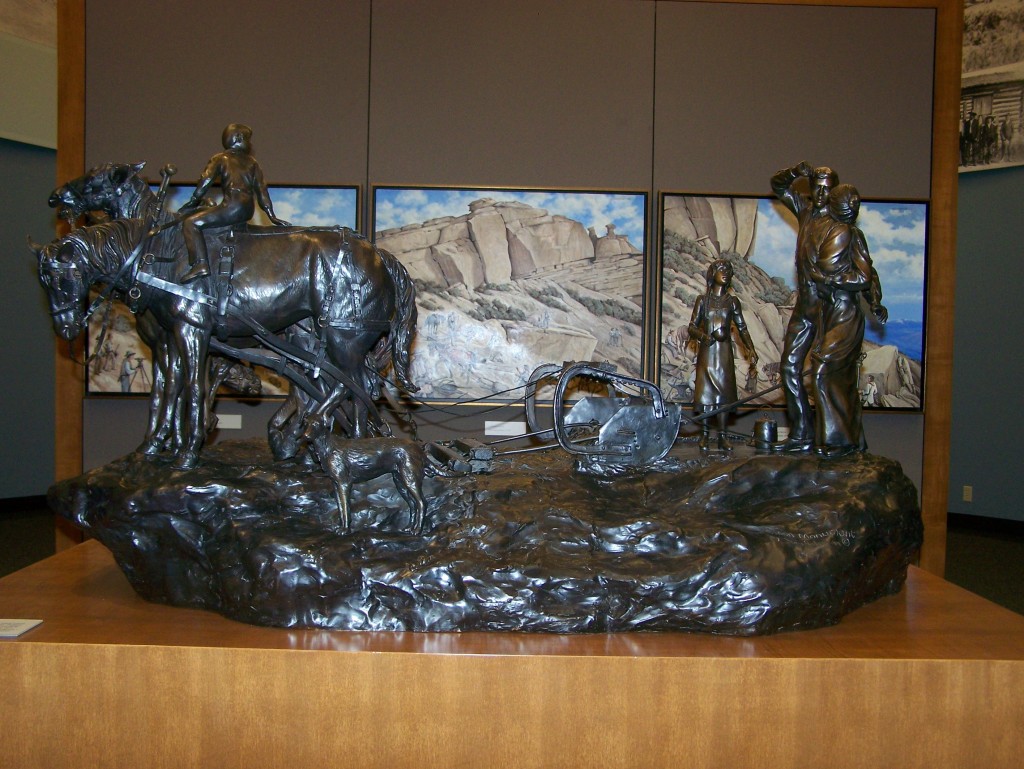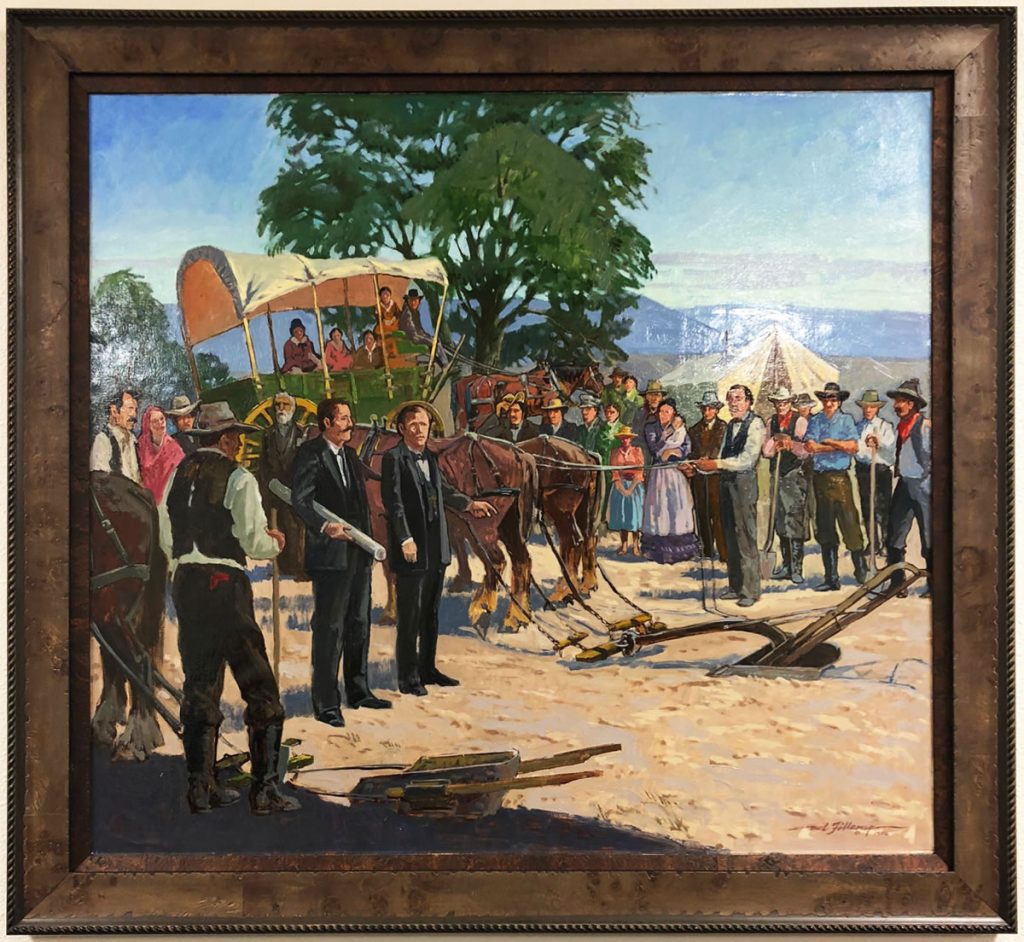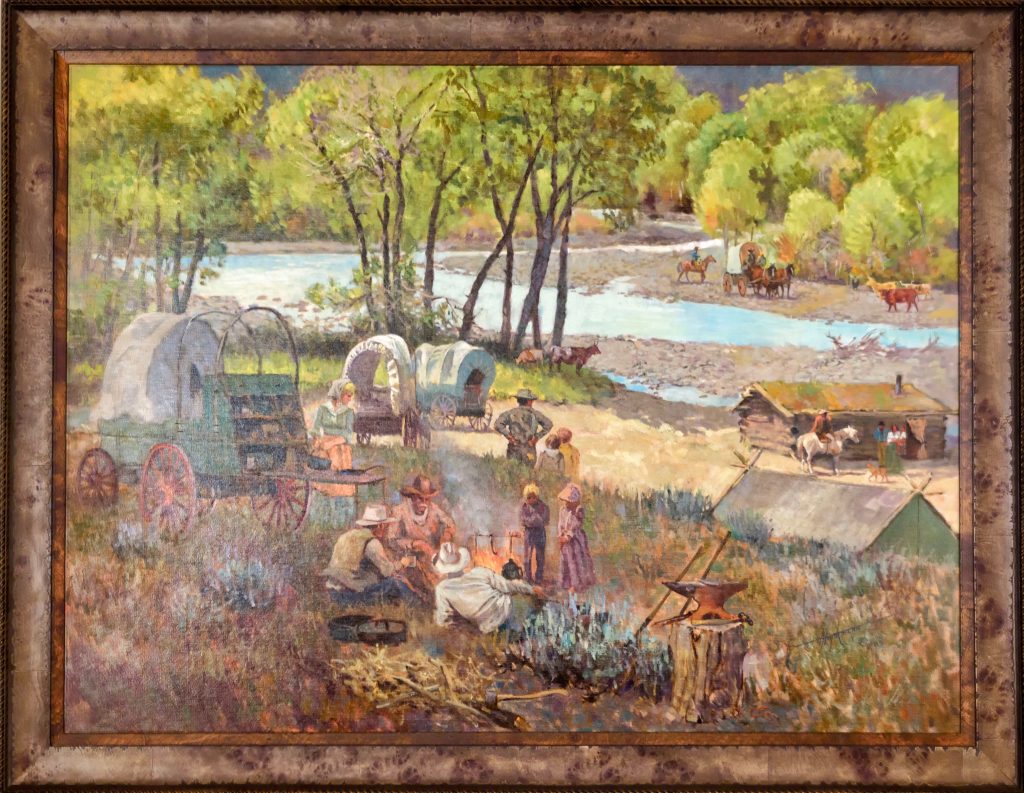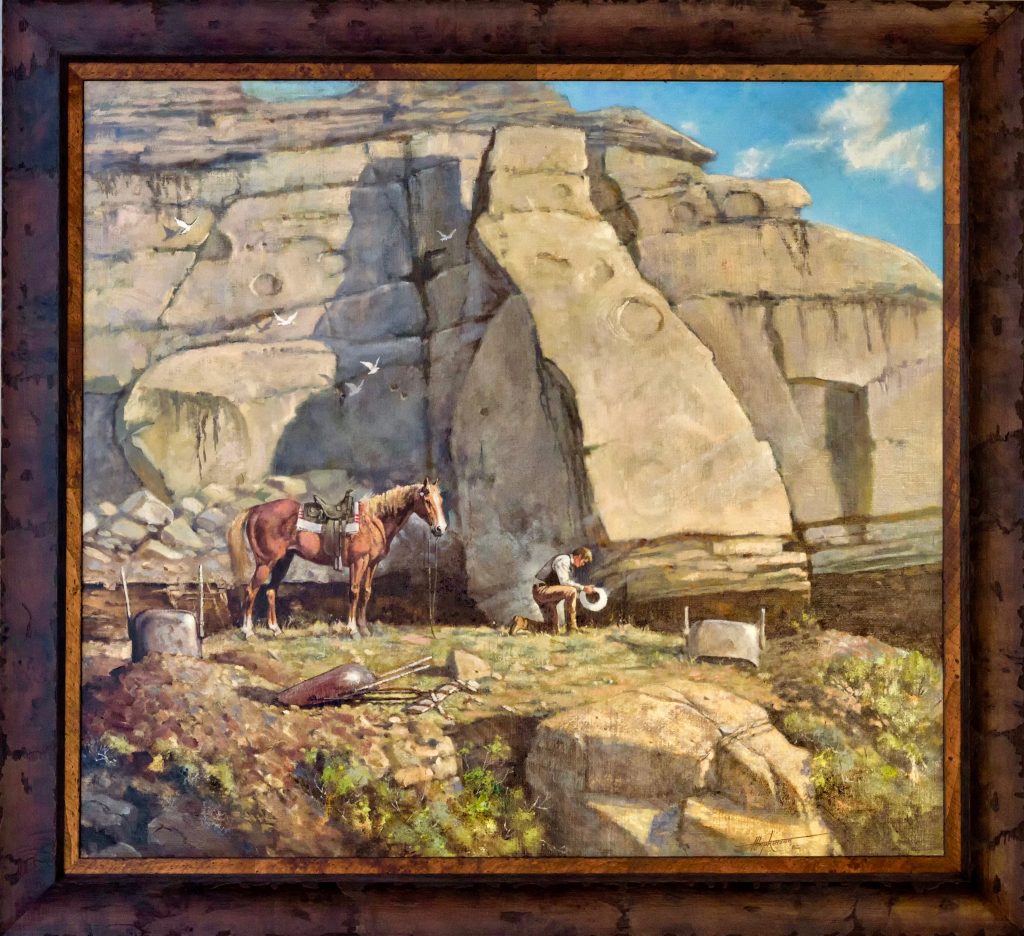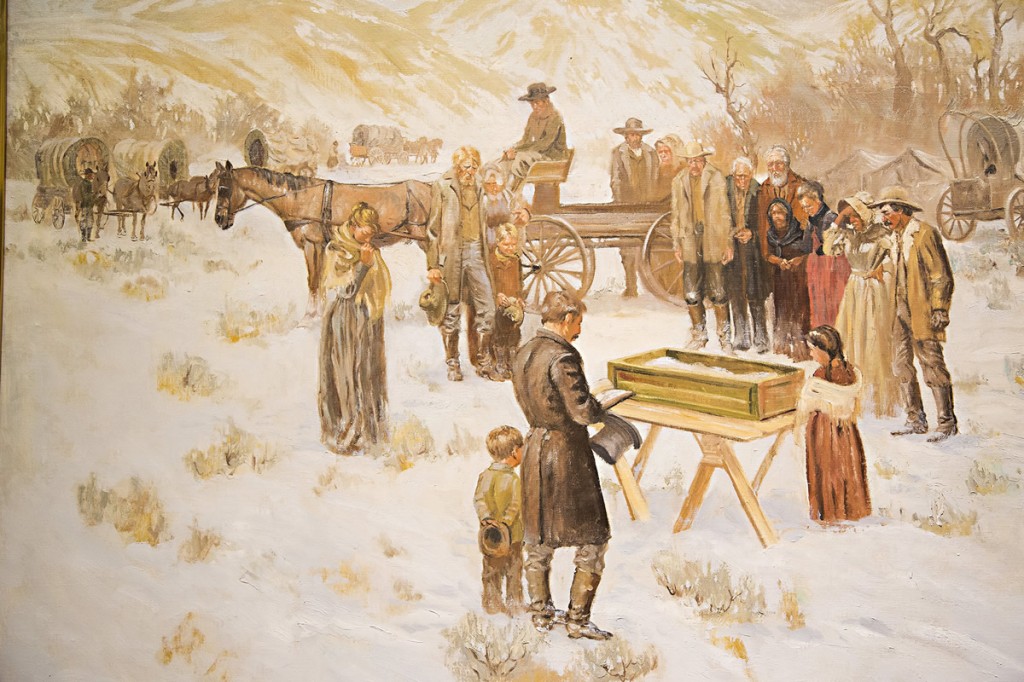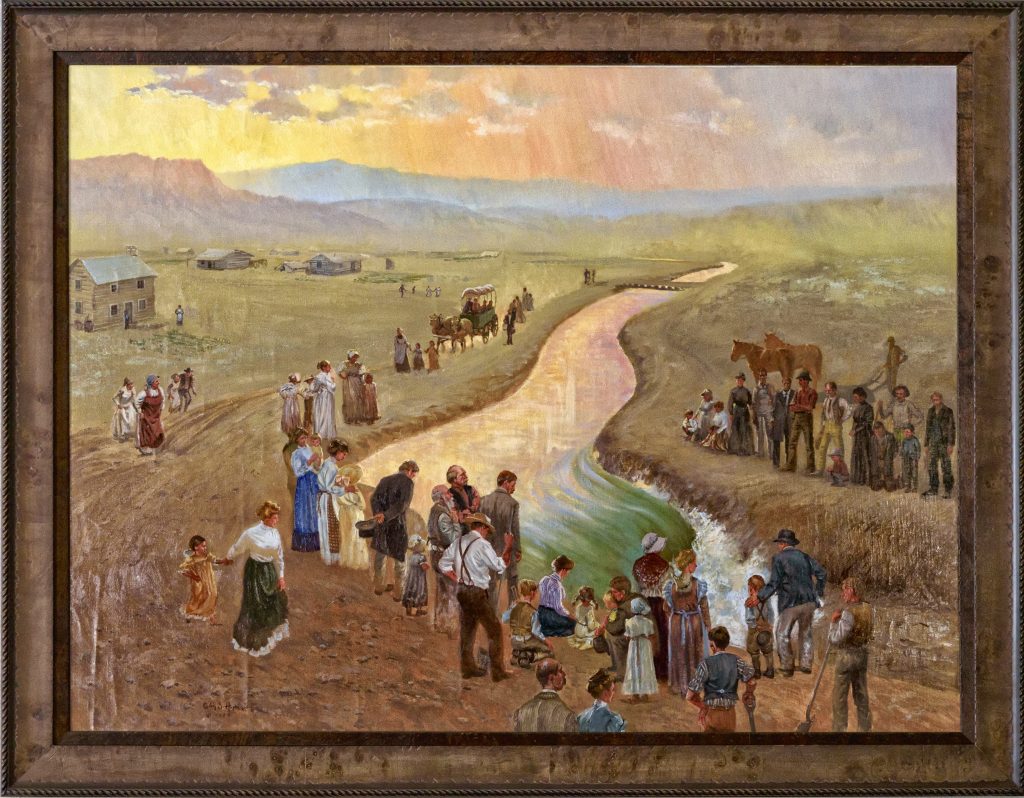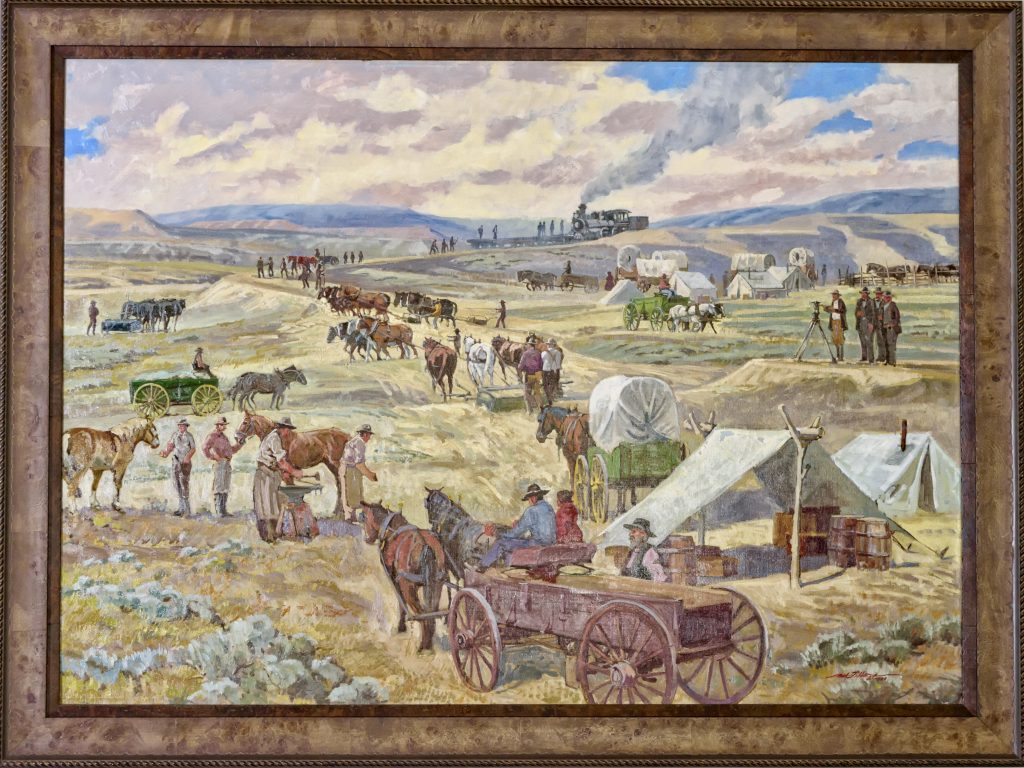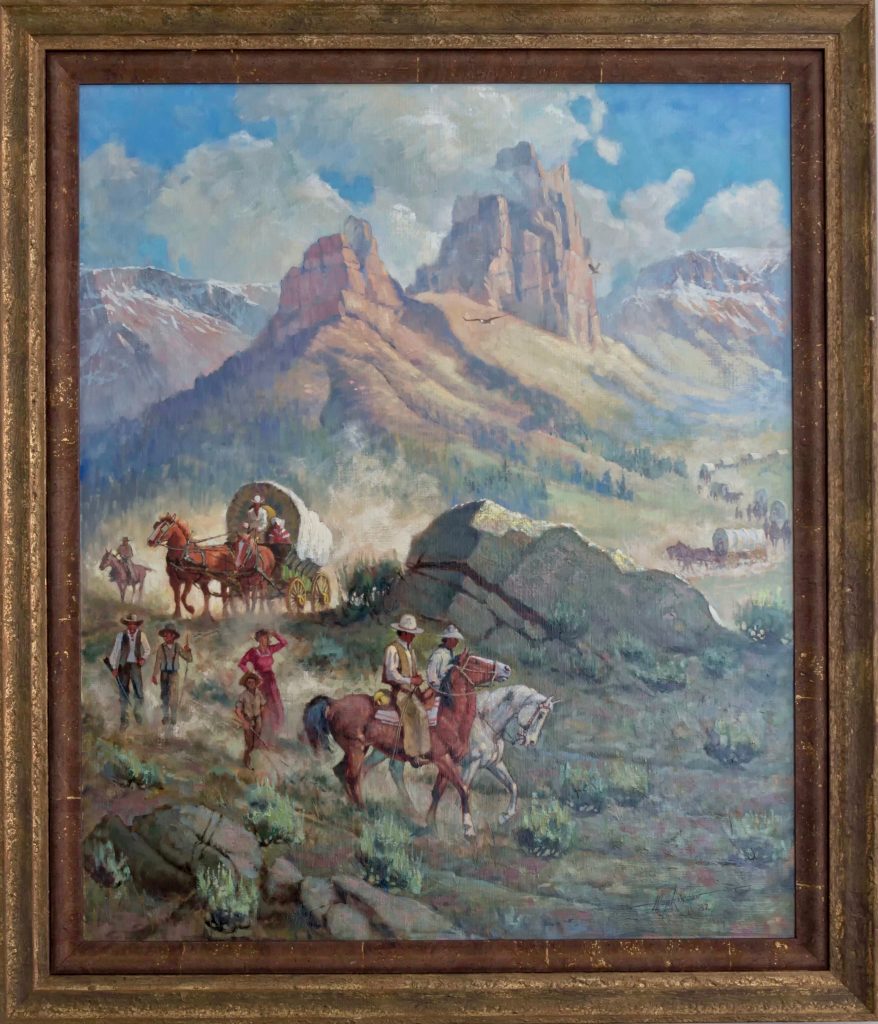The Sidon Monument
This bronze was commissioned by Glenn and Olive Nielson from Utah artist Stan Johnson preparatory to the opening of the Pioneer Museum. Featuring four horses, a family and a dog, this one-third life-sized sculpture took nearly two years to complete prior to its unveiling on August 25, 1983. Behind it are early photographs showing the construction of the Sidon Canal in the early 1900s.
Framed Wood Carving
Carved from a single piece of wood by famed Western artist Dee Flagg, the concept for this bas-relief work came from furniture designer, Thomas Molesworth. Paying tribute to Mormon mothers, it was completed for Sister Louise Taggart, wife of Bishop Lloyd Taggart. The carving is on long-time loan to the museum by the Cody First Ward. This picture depicts only one of the framed wood carvings showcased at the Historic Cody Mural and Museum.
Ground Breaking by Mel Fillerup
(c. 1982)
Knowing that irrigation water would be essential to the growing of any crops, on May 28, 1900, about 200 of the colonists met at the head of the proposed canal, later named the Sidon Canal. A hymn was sung and then all knelt on the ground while Elder Abraham O. Woodruff dedicated the land and the future canal to the Lord for His people.
Mormon Bend by Harold Hopkinson (c. 1989)
After two months of arduous travel, colonists arrived at Mormon Bend near present day Burlington, WY. The men immediately began work on the Sidon Canal, so until cabins could be built, temporary shelters were constructed with cottonwood branches and sleeping was their wagons.
Prayer Rock by Harold Hopkinson
(c. 1982)
After constructing two miles of the Sidon Canal, workers were faced with a giant rock directly in the pathway the water would eventually take. Workers tried to chip away at the rock, to no avail. Byron Sessions, the canal superintendent, pondered over night what to do about it, and eventually got to his knees and prayed. Men were working in the hole into which they had planned to drop the rock. Sessions arrived at the site and told the men to get out of the hole and take a break. Almost immediately the rock split in two and fell into the hole. It was a miracle the rock cracked and fell into the excavated hole, and the men were not hurt due to the inspiration of Byron Sessions.
Death of Child by Glen S. Hopkinson (c. 1882)
Like on the Mormon Trail, death occurred on the trail to the Big Horn Basin. Materials to build a coffin were not to be found, so pioneers constructed a coffin out of the wagon tailgate. The funeral was performed for the deceased little girl, and her body was sent back to Utah to be buried.
Water Flows through the Sidon Canal by Glen S. Hopkinson (c. 1989)
After four difficult years, on April 23, 1904, water finally flowed through the Sidon Canal. Shots were fired to celebrate, and one Cowley resident said, “The joy of the people is great.”
Building the Burlington Railroad Bed by Mel Fillerup (c. 1983)
In addition to using horse-drawn Fresno scrappers or slip scrappers to build the Sidon Canal, men also used this methodology to ready the railroad beds for building the Burlington Railroad system from Bridger, MT. to Deaver, WY.
Exploratory Party Visits the Big Horn Basin by Harold Hopkinson
(c. unknown)
About a year before pioneers arrived in the Big Horn Basin, an exploratory party came to evaluate the feasibility of colonization. Looking out from near Eagle’s Nest, the party determines that the land was good, and colonization was recommended to the Church in Salt Lake City.

